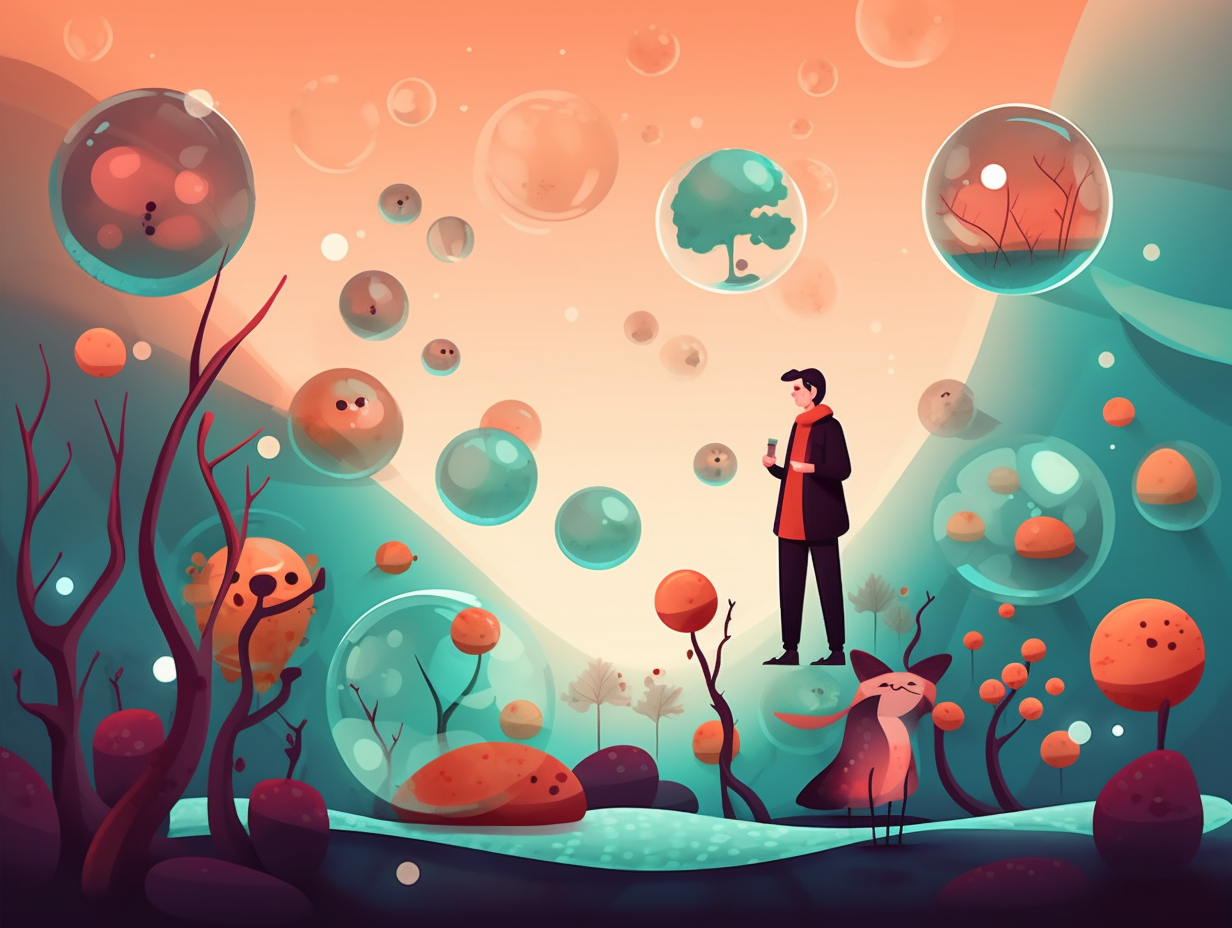Uncover the Unseen: Top 12 Fascinating and Fun Facts About Viruses You Never Knew!

1. Bacteriophage Busters
Move over, Ghostbusters, there's a new crew in town dealing with undesirables: Bacteriophage Busters! They're a bunch of microscopic vigilantes targeting unwanted bacteria: Known as bacteriophages, these viruses specifically infect and hijack certain types of bacteria, becoming allies in biotechnology and heroes in the battle to remove harmful bacteria from food and agriculture production.
Source => education.nationalgeographic.org
2. Flu Outbreak vs World War One
In a tragic game of "Pandemic: Death Toll Edition," the 1918 influenza virus left World War One in the dust: The great flu outbreak gruesomely outscored the war's fatalities, claiming a mind-boggling 50 million lives worldwide, firmly etching its name in the annals of humanity's deadliest moments.
Source => archives.gov

Discover the hilarious secret behind blue cheese's unique aroma and maturation process, starring Penicillium mold and a comedy-loving bacteria! 🧀😂
=> Fun Facts about Bacteria
3. The Mighty Phages
Move aside antibacterial wipes, there's a new sheriff in town fighting the bacterial bad guys: phages! These microscopic yet mighty viruses are incredibly diverse, with an estimated 10^31 phages on Earth, infecting up to 10^24 bacterial cells every second to stay on top of their game. In fact, Pseudomonas-infecting phages flaunt wildly varying genome sizes, from 3 to 316 kb and gene content representing 81-96% of their genome space. The twist? Their evolution is mostly driven by purifying selection, signaling a constant quest for genetic stability in the phage world.
Source => ncbi.nlm.nih.gov
4. Virophages: The Sidekick Viruses
In a microscopic case of "buddy cop" camaraderie, virophages are like the hilarious sidekick that can't do anything on their own, but thrives off the strengths (or in this case, the very existence) of their giant virus partner in crime: These tiny double-stranded DNA viruses can't replicate independently, and instead, borrow the transcriptional machinery of giant viruses to do their bidding without actually getting ill themselves.
Source => ncbi.nlm.nih.gov

5. Viruses: The Undead Microscopic Zombies
Think of viruses like microscopic zombies in a B-movie, seeking to infect living cells while teetering on the edge of life and death themselves: In actuality, viruses exist in a gray area, not quite living organisms but capable of replicating and adapting, making them the ultimate undead foe that cannot be vanquished by antibiotics, only thwarted by antiviral medicines interrupting their replication.
Source => khanacademy.org
6. Astronauts and Herpes in Space
Houston, we have a... blister? Astronauts aren't just reaching for the stars, they're also reaching for their antiviral creams: Dormant herpesviruses can reactivate during space missions, causing skin rashes which may become contagious, but no outbreaks have been recorded since NASA's pre-launch astronaut quarantine was instituted, as revealed in the journal Astrobiology by the German Aerospace Center's Institute of Aerospace Medicine.
Source => space.com
7. Rabies and Mind Control
Next time someone tells you to "take a chill pill," it might just be the rabies virus talking! This sneaky little germ has a trick up its sleeve to turn your brain into its puppet: the virus boasts a neurotoxin-like region in its glycoprotein that inhibits nicotinic receptors in the central nervous system, effectively altering an infected host's behavior. Mastering the art of mind control, it's the first known molecular mechanism where pathogens can manipulate host behavior—now that's a quirky viral claim to fame!
Source => ncbi.nlm.nih.gov
8. Viruses: The Evolution Conductors
Move over, Charles Darwin, there's a new conductor in the Evolution Express, and it's got a one-way ticket to Genetown: Viruses and related elements are key drivers of evolution, providing new genes and regulatory elements through horizontal gene transfer and infections, shaping the genomes of all cellular life forms beyond our wildest theories.
Source => ncbi.nlm.nih.gov
9. Viruses Hiding in Our DNA
Viruses playing the ultimate game of hide and seek, hiding in plain sight: These sly intruders can integrate their genetic material into the host's DNA, leading to long-lasting presence in the host cell but potentially causing gene disruption, insertional mutagenesis, and even cell death.
Source => ncbi.nlm.nih.gov

10. Semliki Forest Virus: The Pop Star of Viruses
Spike up your life, virus edition: Just like the performances of your favorite 90s girl group, the Semliki Forest virus needs all its spike subunits to come together in perfect harmony to truly shine – or in this case, replicate and assemble with the efficiency of a pop hit melody machine.
Source => ncbi.nlm.nih.gov
11. Herpes: The Pesky Coworker
You can run, but you can't hide: herpes is like that pesky coworker who's always around when you don't want them to be! Despite not having visible signs, the herpesvirus is never truly dormant and constantly undergoes low-level reactivation. While most adults are home to these bothersome uninvited guests, they mainly cause severe issues among the immune-compromised, leaving others just mildly annoyed.
Source => ncbi.nlm.nih.gov
12. Ebola's Zombie-like Eyes
Beware the zombie-like eyeballs: Recent studies reveal that live Ebola virus can linger in the eyes of some survivors up to a year after infection, causing uveitis and potential vision loss or blindness, while not actively reproducing within the eye tissue.
Source => healthcare-in-europe.com
Related Fun Facts




















